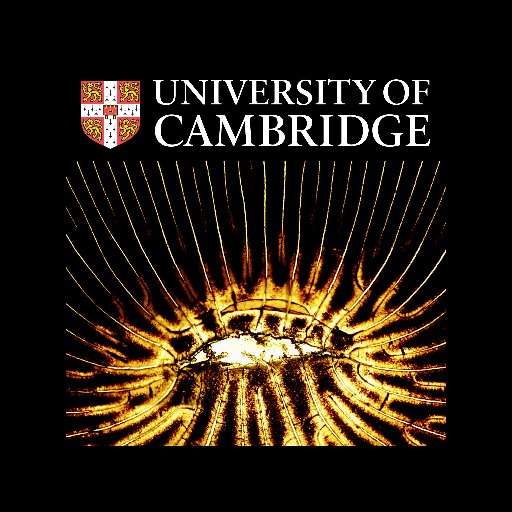
BioelectronicsLab
@BioelectronicsL
Followers
4K
Following
546
Media
50
Statuses
333
Bioelectronics Laboratory at the University of Cambridge
Cambridge UK
Joined December 2019
Outreach day today in the lab, thanks to @RubenRuizMateos @ChrisSlaughter_ @skissovsky for their inspiring presentations!
0
2
13
Last week we had the pleasure of welcoming Dr. Kai Miller to Houston Methodist. He delivered two outstanding talks at our Neurosurgery Grand Rounds and the Center for Neural Systems Restoration seminar. Dr. Miller shared deep insights into the use of stereo-EEG (SEEG) to guide
1
2
15
Excited to share our latest work on using neural controlled differential equations to model vagus nerve influence on glucose levels (@MLSTjournal). Thanks to my co-authors A. Malpica, Prof Kalliadasis @imperialcollege & @GeorgeMalliaras 🔗 https://t.co/DwDXRnLv3V
@BioelectronicsL
2
2
8
The call for the second Cohort of the Cambridge NeuroWorks Fellowship Programme is now open! 🧠 This is a bold opportunity for innovators and original thinkers who aspire to revolutionise neurotechnology. ⏳ October 1 🔗 https://t.co/ejKtcKP9uR 🔗 https://t.co/kcAgQiQQSo
0
2
3
From lab to market: Dept spin-out to develop wearable #etextile #tech for early detection of heart defects https://t.co/wOOlIBPfrs "Polytecks tech records not only electrical heart signals but achieves higher spatial resolution than a conventional ECG" - founder @RubenRuizMateos
1
6
12
Today, we celebrate #INWED25 🎉 @Cambridge_Uni Poppy Oldroyd – Schmidt Science Fellow https://t.co/QRX7eFnE1y
@Gates_Cambridge Scholar-elect Abbie Schipper https://t.co/bWaO8hMdBu Prof Giulia Viggiani – 1st woman to lead our Civil #Engineering Division https://t.co/czHF154ULk
1
8
14
Saying goodbye to @ChaoqunDong @SagnikSM and Misaki Inaoka who will soon be off to bigger and better things!
0
4
31
One week to abstract submission deadline for ECME 2025! Submit your abstract here:
ecme2025.eu
Join us in Cambridge, UK, for ECME 2025 – a premier conference showcasing the latest advances in molecular electronics. September 22–26, 2025.
Delighted to announce that the website for the European Conference of Molecular Electronics (ECME 2025) is now live. Submit your abstract here: https://t.co/MHReOZ39pb See you @Cambridge_Uni
0
5
19
We are thrilled to kick off the BioElevate Seminar Series with our very first speaker, @AmparoGuemes from the @Cambridge_Uni! 👉 Register here: https://t.co/QYthE7c8gy…
1
3
7
Stimuli-Responsive Materials and Soft Robotic Actuators for Bioelectronic Medicine @ChaoqunDong @BioelectronicsL @Cambridge_Eng @cambridge_ee
advanced.onlinelibrary.wiley.com
This review explores the integration of responsive materials and soft robotic actuators with implantable electronics to address key challenges in bioelectronic medicine. By enabling shape actuation,...
1
13
46
New #research involving scientists from @Cambridge_Uni, @RiceUniversity & @Stanford could make #bioelectronic devices easier and more reliable to manufacture – all thanks to a chance discovery made during an experiment https://t.co/GtXGZrQjgb
@BioelectronicsL @GeorgeMalliaras
eng.cam.ac.uk
New research involving a team of scientists from the University of Cambridge, Rice University and Stanford University, could make bioelectronic devices easier and more reliable to manufacture – all
0
8
24
Thanks @GeorgeMalliaras! Thankful for the opportunity to share our work at such an amazing conference. This wouldn’t have been possible without the support of the amazing team we have at @BioelectronicsL
1
2
16
It was a real pleasure to host Prof. Dion Khodagholy at Houston Methodist as part of the Center for Neural System Restoration Seminar Series. His talk provided a fascinating glimpse into the latest advances from the Translational NeuroElectronics Lab at @UCIrvine, covering
1
3
26
Body Surface Potential Mapping: A Perspective on High‐Density Cutaneous Electrophysiology - https://t.co/9VwTfFT3DF
@RubenRuizMateos @NeuroCon_ICL @Cambridge_Eng @cambridge_ee @BioelectronicsL
advanced.onlinelibrary.wiley.com
This article explores advancements in body surface potential mapping (BSPM), focusing on high-density electrode arrays. It outlines guidelines for optimal array design based on signal properties and...
0
11
39
Cambridge Neuroworks Fellowships!
The website is now live, with a description of the programme and a link to the application form. https://t.co/k3Qfeb59l4
0
1
12
Join us for the launch of Cambridge NeuroWorks, an ambitious partnership with @ARIA_research to revolutionise neurotechnology. You will hear about the Blue Sky and Activator Fellowships, soon to be launched https://t.co/3MX3pICqvI
eventbrite.co.uk
Join us for the launch of Cambridge NeuroWorks to revolutionise neurotechnology.
1
6
16
Excited to share our latest perspective, The Future of Biohybrid Regenerative Bioelectronics, published in @AdvPortfolio 'Advanced Materials'! In this work, we explore the incredible potential of biohybrid regenerative devices—cutting-edge technologies that integrate living
1
8
26
🔄 Please Repost ✨ We Want You to Shape the Future of Neurorestoration! ✨ Are you ready to work at the intersection of neural interfaces, stem cells, and advanced technology? My lab at Houston Methodist Research Institute is recruiting Postdoctoral Fellows to pioneer
0
6
9












